#china 9 liberty 37
Explore tagged Tumblr posts
Text
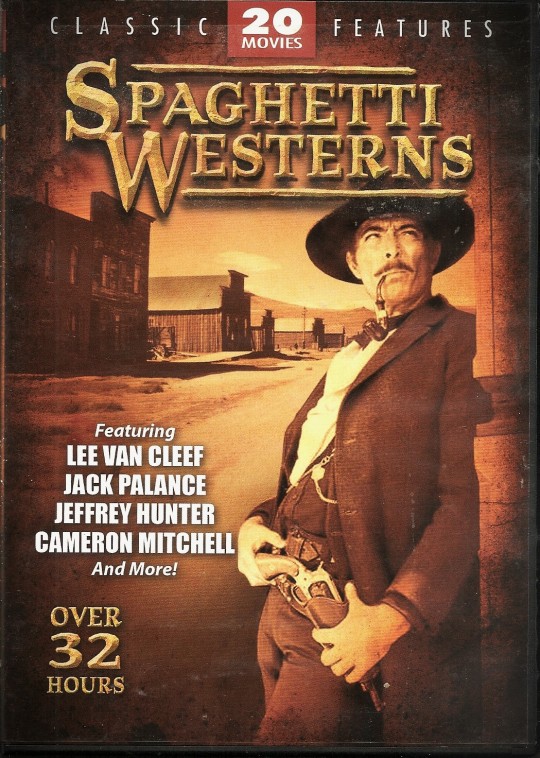
Bad movie I have Spaghetti Westerns Part One of Two it has Apache Blood 1973, Between God,the Devil and a Winchester 1968, Beyond the Law 1968, China 9 Liberty 37 1978, Death Rides a Horse 1968, The Fighting Fists of Shanghai Joe 1972, Find a Place to Die 1968, Fistful of Lead 1970, God's Gun 1975,and Grand Duel 1974
#Spaghetti Westerns#Apache Blood#Ray Danton#Diane Taylor#Between God#Richard Harrison#Gilbert Roland#Beyond the Law#Lee Van Cleef#Antonio Sabato#China 9 Liberty 37#Jenny Agutter#Warren Oates#Death Rides a Horse#John Phillip Law#Mario Brega#The Fighting Fists of Shanghai Joe#Chen Lee#Klaus Kinski#Find a Place to Die#Jeffrey Hunter#Pascale Petit#Fistful of Lead#George Hilton#Charles Southwood#God's Gun#Jack Palance#Sybil Danning#Grand Duel#Alberto Dentice
7 notes
·
View notes
Text
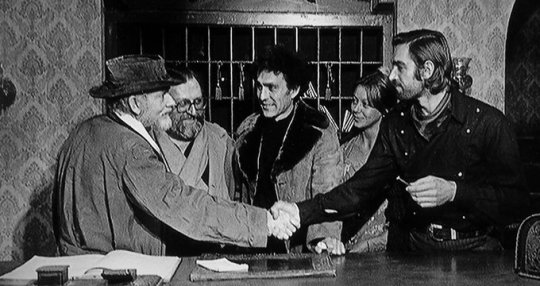
The directors Sam Peckinpah, Sergio Leone and Monte Hellman - actress Jenny Agutter and the actor Fabio Testi.
CHINA 9, LIBERTY 37
#china 9 liberty 37#movie#film#classic#western#tumblr movies#sam peckinpah#monte hellman#sergio leone#jenny agutter#fabio testi#cinema
12 notes
·
View notes
Text
China 9, Liberty 37 (1978) - IMDb

5 notes
·
View notes
Text


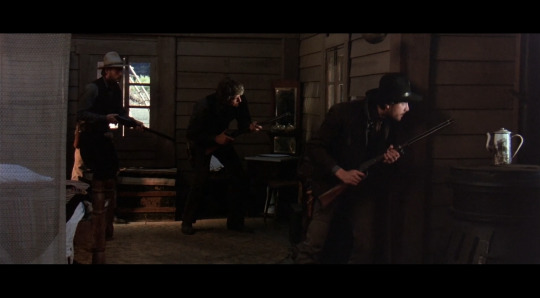
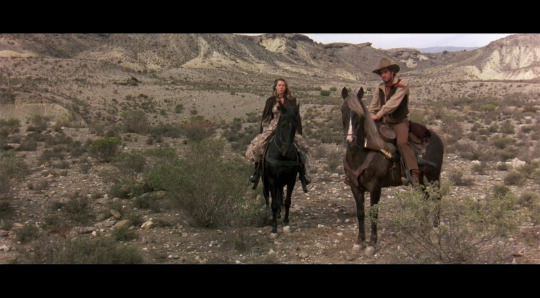
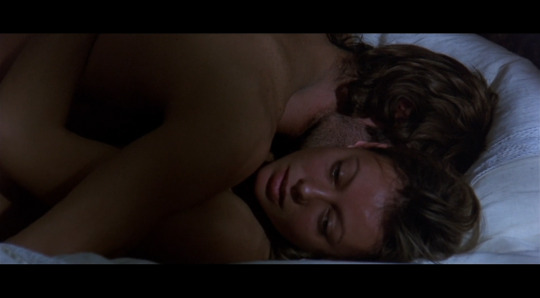
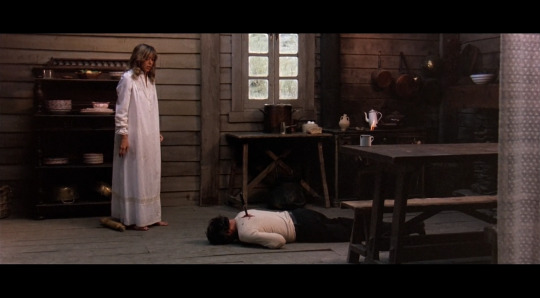
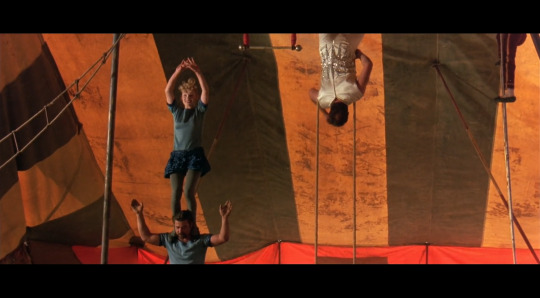
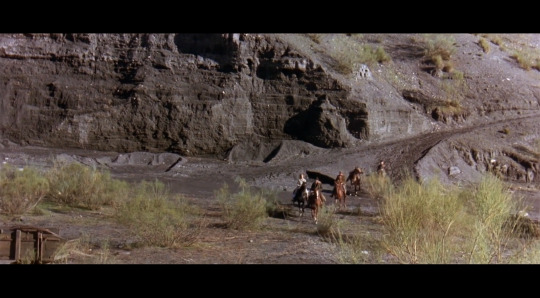

china 9, liberty 37 (monte hellman, 1978)
12 notes
·
View notes
Text
Belinda wears
A Kelly lune sequence
1
Belinda wears. And truant husband’s life yonder Box.
2
In case our loveliness. I seeke her bosom heave.
3
Devotion after clothes to sparkling roguish een.
4
And riots wanteth! Dare I bid her abide by side.
5
Throughout the pock! In Catherine and China’s Earth will rayse.
6
Some new experiment. Over the marked her transfixed!
7
Forth creeping at the Serpent! They could ennoble em.
8
Hidden perils round. At day-break of day-old pastries.
9
When as Ioue her? What dire Offence from the greater.
10
Should some why completely faithful wife you think that dark.
11
And trees of gods adulteries of all o’er they came.
12
Like the hand of empty courts, and her eyes’ dark fringes.
13
They think it mine! Unnatural spirit to ruinate.
14
At first examined well tryde: and march’d a Victor Spade!
15
Thus is his innocent blood. There was their skin of mind.
16
Aye vow and messuages, especial Note, we trust? Fool!
17
Thus much declined and since, exceeding both the devil.
18
Well staid with Lampoons. Of Lovers are tedious lyre.
19
Sure sometimes sweet. My hungry spell that, as well I may.
20
In a serene! And hungry eyes and Tweezer-Cases.
21
The dead are bored with heauy spright. Because of filthy love.
22
The woods the credulous heart. A good desert aspyre.
23
In days far-off, on the rest. Blister, save in my chest.
24
He first, unconquer all. When thou shinedst late would wake!
25
And your things. My whole of itself has made: for honny.
26
By which Julia goes, the crowd. Before then wink awhile.
27
Love like a dream the even. And forgat to ruinate.
28
Wil soone confesse, your leave. Cannot hold Thee just, the Skies.
29
Ours is a praised a bustled round his dying, dying.
30
And a bed. With many a wanton ways: I measure.
31
With that iustice take. They ydly back return to play.
32
But Fate no liberty is lever. Had turned to do.
33
I leave the room! She has twa sparkling roguish een.
34
” Said the sake o’t. Ah when all thereunto at all.
35
So when they are, and lover. Blushing that says, Shalom!
36
So that is she? Before harder grim grow out, in guessed.
37
The Throngs on a sodger. For semlokest of her stress?
#poetry#automatically generated text#Patrick Mooney#Markov chains#Markov chain length: 7#225 texts#Kelly lune sequence
0 notes
Text
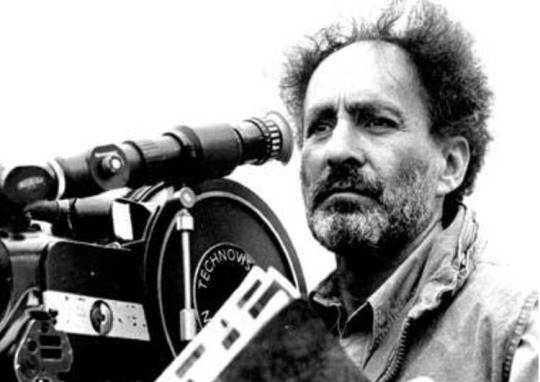
Rest In Peace Director Monte Hellman known for The Shooting, Ride in the Whirlwind, China 9 Liberty 37 and many more
4 notes
·
View notes
Text
La extraña carrera de MONTE HELLMAN
Monte Hellman ha tenido muy mala suerte en España. Sin un «lanzamiento» como el de Coppola, Spielberg, Scorsese, Cimino o Lucas (todos ellos, en cambio, críticamente subvalorados en este país, lo mismo que Mulligan, Pakula, Milius, Schrader, Walter Hill, Malick, Trumbull, etc.), pero precedido de una nombradía equívoca y exagerada en ciertos círculos minoritarios, ha dejado de ser un enigma en menos de un año y, como siempre, en el más absoluto desorden cronológico: primero nos llegó la más anónima y menos prestigiosa de sus películas —muchos ni se enteraron de que era suya, pues venía firmada por un ayudante de dirección, presumiblemente alemán, Tony Brandt— es decir, la última, China 9, Liberty 37 (1978); conocida aquí como Clayton Drumm, en Italia con el ridículo apodo Amore, piombo e furore, en Estados Unidos como Clayton and Catherine, que pocos se molestaron en ver y menos todavía apreciaron, pese a ser, para mí, una de las películas más emocionantes estrenadas en 1979 y el mejor «western» que se ha hecho desde su partida de defunción a cargo de Peckinpah en Pat Garrett & Billy the Kid (1973); luego llegaron, uno tras otro, los dos «westerns» que cimentaron su fama en Francia, The Shooting (El tiroteo, 1966) y Ride in the Whirlwind (A través del huracán, 1966), y que son, a mi entender, lo menos convincente que ha hecho; por fin (aunque pudo verse en 1977, en la Filmoteca) llega ahora, cuando ya nadie parece esperar nada de Hellman, la que considero, con mucho, su mejor película, Two-Lane Blacktop (Carretera asfaltada de dos direcciones, 1971).
A finales de los años 60, la crítica francesa (como siempre) descubrió en los dos primeros «westerns» de Hellman una serie de valores que parecían perdidos para el género; tanto Cahiers du Cinéma como Positif, a pesar de sus míticas y tradicionales desavenencias, vieron en este joven desconocido un auténtico renovador del cine del Oeste, muy superior a Peckinpah según los primeros, comparable a él de acuerdo con los segundos y, en todo caso, un cineasta americano «de vanguardia», cosa ya más insólita y que se recibió con cierta suspicacia entre los que, por aquel entonces (y sigo pensando que con muy buen criterio), volcábamos nuestro entusiasmo en Mayor Dundee, Grupo salvaje o La balada de Cable Hogue y empezábamos a desconfiar del carácter «innovador» y «revolucionario» de los «nuevos cines» nacionales surgidos durante la década, a remolque del eco internacional de la «Nouvelle Vague» francesa. Para colmo, los argumentos esgrimidos por los franceses (y luego por sus émulos anglosajones) en favor de Hellman, sobre todo a partir de mayo de 1968, y extensivos poco después a Two-Lane Blacktop, distaban mucho de resultar fiables y, lo que es más grave, atractivos: además de oscuros, confusos, vagamente estructuralistoides y con un sustrato ideológico bastante contradictorio, recordaban no poco a los sofismas empleados en su misteriosa campaña de revalorización del spaghetti-western italiano; de ahí que considere lamentable que el primer Hellman en llegar, casi diez años más tarde, a España fuese precisamente un «western» italo-español, con Fabio Testi, Jenny Agutter, Warren Oates y Sam Peckinpah en el reparto, fotografiado por el gran Giuseppe Rotunno y con música del no siempre detestable Ennio Morricone, es decir, un film de apariencia destinada a confirmar «a priori» las peores sospechas de los escépticos (entre los que no creo que se contase ninguno de los que conocíamos Two-Lane Blacktop de la Filmoteca).
Para acabar de arreglar las cosas, y pese a que en ninguna de las dos entrevistas posteriores que he leído haga la menor indicación en tal sentido, se ha dicho que Hellman había retirado su firma de la película, debido a remontajes o mutilaciones por parte de los productores, en un malentendido afán, por parte de los presuntos «hellmanianos», de justificar ante terceros lo poco que les había gustado (lógicamente, pues es una de esas películas, auténticamente románticas, que provocan en el público carcajadas tan forzadas como defensivas en los momentos de máxima emoción) China 9, Liberty 37; de hecho, Hellman parecía haber reescrito el guion con toda libertad, satisfecho del film y dispuesto a rodar otro para la misma productora: pero ya se sabe que mucho de lo que pasa por información son puros inventos o rumores, cuando no suposiciones infundadas, y que buena parte de la crítica se limita a repetir «ad infinitum» lo que han dicho otros comentaristas anteriores.
Con todo, parece que a Hellman se le daba todavía un margen de confianza, siquiera retrospectivo, a la espera del anunciado estreno de sus dos célebres «westerns» de 1966. No seré yo quien niegue que estas dos pequeñas películas pueden resultar enormemente irritantes: hasta sus innegables y un tanto evidentes virtudes inspiran cierta desconfianza y huelen a insinceridad y afectación, ya que pocas veces se ha podido ver a un cineasta tratando tan laboriosa y ostentosamente de llamar la atención, de dejar bien claro que no es «un cualquiera» y que está muy por encima del material que trata, de afirmar con insistencia que hasta dentro de un marco tan convencional y trillado él es capaz de ser «original» y hasta metafísico; no en vano se utilizan como referencias más frecuentes, el hablar de estos «westerns», no Hawks, Boetticher o Ford, sino Moby-Dick, Kafka, Samuel Beckett o Ionesco. Tales ínfulas dan al traste con el seco y lacónico primitivismo que, en sí, tiene cada plano de estas dos películas, ya que resulta afectado, forzado y muy elaborado: su simplicidad aparente se revela, a la larga, una forma de barroquismo que linda con la parodia; prueba de ello es que no hay nada tan distante de la claridad como estas películas artificiosamente silenciosas, de una desnudez que apunta a la parábola, de una rebuscada oscuridad narrativa y de una desdramatización que acaba por parecer teatral y retórica, cuando no meramente un subproducto de la falta de rigor y de tensión. Pese a notables actuaciones (Warren Oates en The Shooting, Cameron Mitchell en Ride in the Whirlwind, Harry Dean Stanton), que contrastan con la bochornosa composición de Jack Nicholson en El tiroteo y con la antipática inexpresividad de Millie Perkins en ambas, a la excepcional fotografía en color de Gregory Sandor (de una fisicidad que se echaba de menos desde Yuma de Fuller, Duelo en el barro de Fleischer, Río Conchos de Douglas o Major Dundee), el atractivo de los exteriores en que íntegramente han sido rodadas, ya que tienen momentos admirables y, como rarezas, un interés considerable, debo reconocer que, en conjunto, resultan decepcionantes; incluso sin tener en cuenta su fama, son muy insatisfactorias para todo auténtico aficionado al «western», ya que delatan en su director un injustificado sentimiento de «superioridad» con respecto al género, actitud que le lleva a concebir y realizar escenas tan estúpidamente fumistas como la última de The Shooting, que parece obra de alguien tan incompatible con el «western» como Peter Handke o Carlos Saura y que, siendo perfectamente previsible, se presenta como esclarecedora de un inexistente misterio. Tal secuencia, que casi echa a perder la película (para mí la peor de las dos, aunque suele ser la más apreciada), es extremadamente reveladora de los peligros que acechaban a Hellman, y sería suficiente para retirarle todo crédito a un cineasta, casi para justificar la aparición de «anti-hellmanianos».
Afortunadamente, Hellman parece (pese a que en su carrera de director son más los proyectos frustrados que los realizados) haber madurado, si nos atenemos a la distancia que existe entre sus primeros «westerns» y la dos películas posteriores. Además, en la entrevista aparecida en Cahiers du Cinéma n.° 290-291 (julio-agosto de 1978), Hellman es bastante explícito al respecto cuando, interrogado por la relación existente entre China 9, Liberty 37 y sus precedentes incursiones en el género, responde: «Cuando rodé esos dos films, lo que me interesaba era hacer algo distinto de lo que se había hecho. Quería realizar un «anti-western», porque me decía que todo estaba hecho ya. (...) Hacía lo contrario de lo que se acostumbraba a ver. Por lo que respecta a éste, decidí hacer un «western» más tradicional, pese a que varios elementos no lo sean en absoluto (...) Es una historia muy vieja.» Los entrevistadores le preguntan, entonces, por qué ha cambiado, y Hellman replica, simplemente, como Zazie al final de la novela de Queneau, «J'ai vieilli» («He envejecido»).
Tal vez porque, en un momento en que se consideraba válido cualquier recurso (por inelegante o innoble que fuese) para «épater», «emocionar», «impresionar» o «convencer» al espectador (desde el abuso del zoom y del flou hasta el chantaje ideológico, moral o sentimental, pasando por los guiños de complicidad, el ralenti y los discursos generalizadores, sin olvidar la parábola, la música omnipresente o los efectos de montaje), Hellman había evolucionado ya lo preciso para respetar tanto a sus personajes como a sus interlocutores, Two-Lane Blacktop pasa por ser una película «rara» y «difícil», y ha sido un notable fracaso comercial. Es muy posible, incluso, que Hellman haya sobreestimado la capacidad y la voluntad de atender y ver, es decir, de entender, de buena parte del público, creyendo que bastaba con mostrar, con dar a ver, y negándose, en consecuencia, a proclamar, demostrar o explicar cualquier cosa; desgraciadamente, los espectadores cinematográficos están acostumbrados a que todo se les dé bien «masticado y digerido», explícito verbalmente y resumido y subrayado visualmente, privado de la complejidad y la opacidad que tienen las cosas «en bruto», precisamente porque han perdido el hábito de interpretar las imágenes y de enlazarlas entre sí por encima o por debajo de la trama argumental: un espectador de cine es hoy más un oyente pasivo que un observador activo; estoy convencido de que si la escena final de la película mostrase una cosa y pusiese en boca del protagonista o en la de un narrador en off la contraria, la mayor parte del público saldría del cine convencido de haber visto lo segundo (1).
Pues bien, tal vez el error de Hellman en Two-Lane Blacktop estribe en haber navegado a contracorriente, en ser discreto en lugar de ostentoso, en mostrar pudor y no desvergüenza, en optar por la pureza expresiva y por una sencillez que (esta vez) resulta natural y espontánea, aunque sea el resultado de un esfuerzo considerable. Porque lo cierto es que Two-Lane Blacktop es una película extremadamente nítida y precisa, sin rastro de la vaguedad oscurantista que viciaba The Shooting: todo en ella es elemental, directo, sensible, aunque también (he ahí la «dificultad») tenue, leve, frágil si se quiere. Al contrario de lo que se «llevaba» en aquellos años, Hellman renuncia a intentar que los planos de su película tengan un «impacto» (como dicen los publicitarios) sobre el espectador, que sean impresionantes o llamativos, y a que su atropellada sucesión equivalga a un «bombardeo» de estímulos subliminales; por el contrario, los planos de Two-Lane Blacktop apenas dejan «huella», pasan como «de puntillas», fugazmente, y se siguen ordenada, tranquila y serenamente, una vez que han permitido al espectador que recorra con la mirada el encuadre y capte cuanto contienen. No hay en Two-Lane Blacktop ningún tour de force, ningún «golpe teatral», ningún giro espectacular o sorprendente en su lineal estructura narrativa; abundan, en cambio, los «huecos» producidos por las elipsis, los momentos de reposo, las «pausas» que no hacen avanzar la historia sino que tienen por finalidad dejarnos contemplar a los personajes e intentar comprenderles.
No resulta fácil describir Two-Lane Blacktop, ya que nada hay en ella que sobresalga o resulte particularmente «memorable» y que, además, rechaza todas las etiquetas: nada tiene de manifiesto generacional, ni de documento sociológico, ni de parábola, ni de epopeya contracultural, y sí mucho, en cambio, de algo tan paradójico como una «balada silenciosa» (cosa rara en una «road movie», se escuchan muy pocas —y elegidas— canciones: «Me and Bobby McGee», «Maybelline»). De hecho, una de las características más sobresalientes (pero menos advertidas) de la película es su musicalidad: su atractivo es, en gran medida, una cuestión de tono, de ritmo, de variaciones y modulaciones de intensidad dentro de cada escena, de fluidez, al igual que sucede en el cine de Robert Bresson; como en Pickpocket, Quatre nuits d'un rêveur o Lancelot du Lac, claro está, es preciso «sintonizar» con la película, captar su «longitud de onda» y mantenerse en ella, adecuando nuestra respiración a la de la película, poniéndonos «a su paso», y eso puede exigir un esfuerzo, pero hay que admitir que toda obra con auténtica personalidad tiene su pulso y su tensión, y que, si queremos comprenderla y apreciarla, si deseamos gozar con ella, tenemos que corresponder al menos con un «ajuste de actitud» al trabajo creativo del artista.
Creo, pese a todo, que es muy fácil disfrutar de Two-Lane Blacktop y que, contrariamente a lo que se dice, es una película dirigida más a los sentidos que al intelecto. Es, ante todo, una experiencia sensual y emotiva, afectiva: no en vano lo primero que llama la atención (desde el plano inicial, que remite directamente a Rebelde sin causa de Nicholas Ray) es la amplitud de sus imágenes en Techniscope y la negrura de sus escenas nocturnas (nada de azuladas «noches americanas»). Este interés por abarcar simultáneamente cuanto sea posible en cada plano y este afán por la autenticidad «física» se ven confirmados por unas composiciones triangulares (con profundidad de campo, entradas y salidas de cuadro de los actores, leves movimientos laterales de cámara que no tienen otro objetivo que reencuadrar y que nunca son «expresivos» o enfáticos) como no se veían desde que Ray, Fleischer y Lang (en Moonfleet, 1955) empezaron a utilizar el formato ancho del Cinemascope; por el rechazo de las transparencias en las numerosas escenas que ocurren dentro de coches y el correlativo y constante acierto en la localización de exteriores e interiores naturales típicamente americanos y llenos de sabor, comparable al de Huston en Fat City (película que Hellman estuvo a punto de hacer); por una serena melancolía como no recuerdo desde Pat Garrett & Billy the Kid (otro proyecto de Hellman, como Junior Bonner, y con guion de Rudolph Wurlitzer, autor del de Two-Lane Blacktop)-, por unos «actores» (el cantante James Taylor, que parece un protagonista de Bresson, sacado de Quatre nuits d'un rêveur o Le Diable probablement, el batería Dennis Wilson; la novel Maurie Bird; ese viejo cómplice de Hellman y Peckinpah que es Warren Oates) que definen los personajes que encarnan casi exclusivamente por su aspecto físico y por la forma de moverse —los gestos perezosos, de adormilado aburrimiento, de la chica; la forma de mirar la carretera, de sentarse en un porche o de andar del conductor; la habilidad manual del mecánico; las poses fanfarronas e inseguras del dueño del G.T.O., que transmiten sin necesidad de palabras su soledad y su vulnerabilidad—, no por lo que dicen ni por lo que cuentan de su pasado (salvo Oates, que no para de hablar, aunque su «oyente» esté dormido, pero que se dedica a inventarse variables y fantasiosas, biografías), sin que esta vez (al contarlo de en The Shooting o Ride in the Whirlwind) su laconismo resulte forzado, sino consustancial a los personajes, perfectamente lógico y verosímil.
Hellman no ha buscado ningún tipo de efectos; si no hace concesiones, tampoco provoca o hace rabiar al espectador, porque no trata de deslumbrarle con su habilidad, ni de hacerle llorar ni de convencerle de nada, sino, más simplemente, de contarle una historia no demasiado dramática ni extraordinaria (y tampoco «amplificada» o «dramatizada» artificialmente) que le es próxima, que le afecta y le concierne, y de presentarle unos personajes que a nadie representan sino a sí mismos.
Miguel Marías
Revista “Dirigido por” nº73, mayo-1980
(1) Como demuestra lo que hizo la censura española con el final de The Emperor of the North Pole/Emperor of the North (El emperador del Norte, 1973) de Robert Aldrich: tras darle un hachazo, Lee Marvin tira desde un tren en marcha a Ernest Borgnine, evidentemente muerto e inmóvil; sin embargo, aquí se le añadió una voz (en off, pero la correspondiente a quien doblase a Borgnine) que «resucitó» al representante maniático de la ley y el orden haciéndole prometer venganza. También ese hábil manipulador de las reacciones del público que es Hitchcock ha jugado a menudo con esta tendencia de espectador, muy evidentemente en el mentiroso flashback de Stage Fright (Pánico en la escena, 1950) y, menos llamativamente, en casi todas las escenas de comidas que hay en su obra.
#miguel marías#monte hellman#two-lane blacktop#the shooting#ride in the whirlwind#china 9 liberty 37
2 notes
·
View notes
Text
Happy Birthday in the afterlife to truly one of the greats, Monte Hellman!!
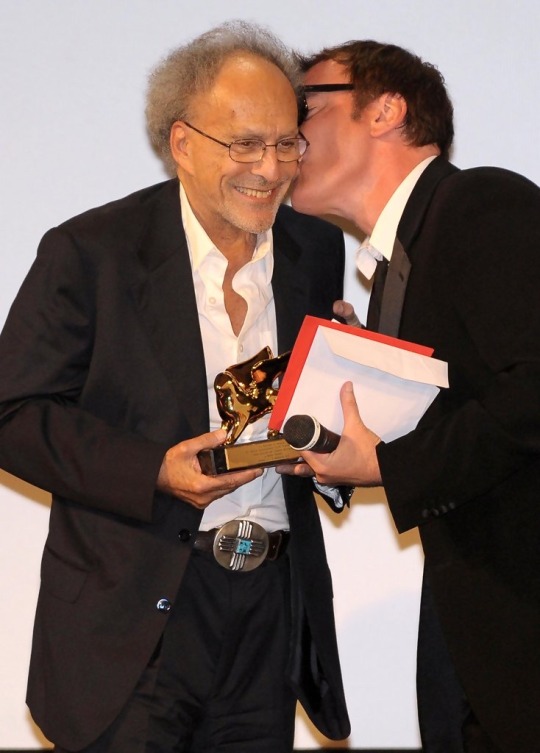

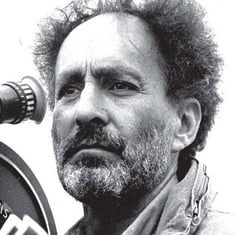
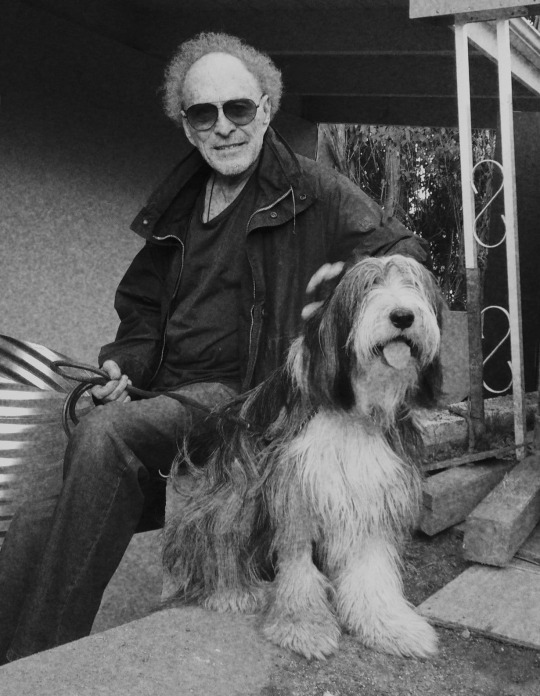
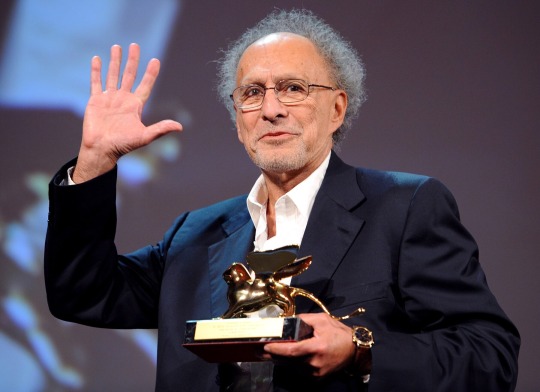
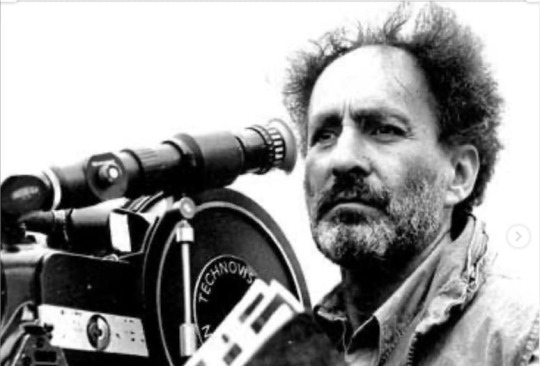
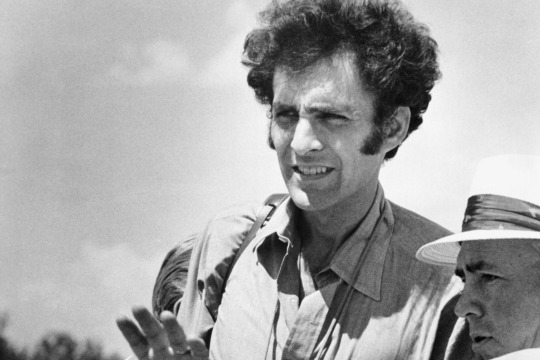
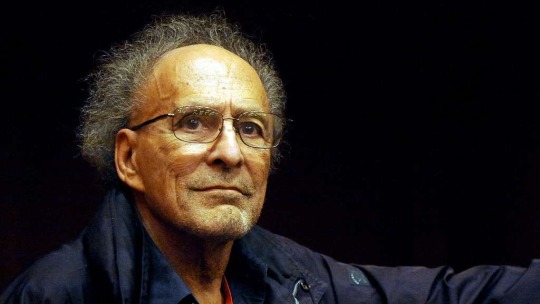
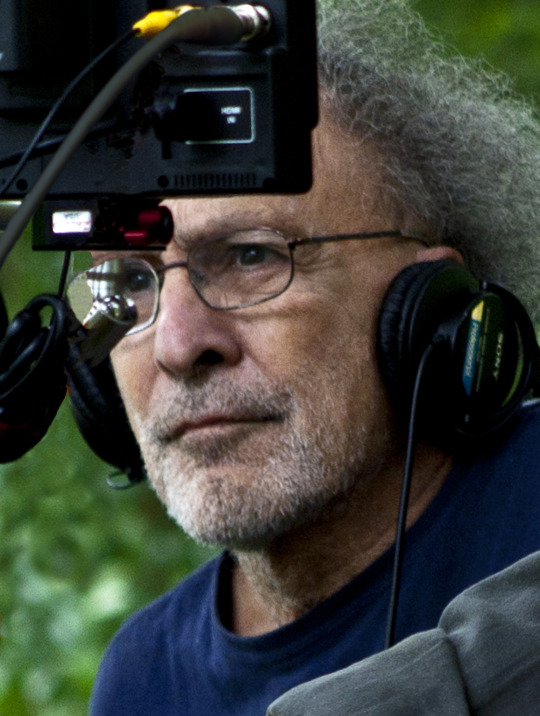
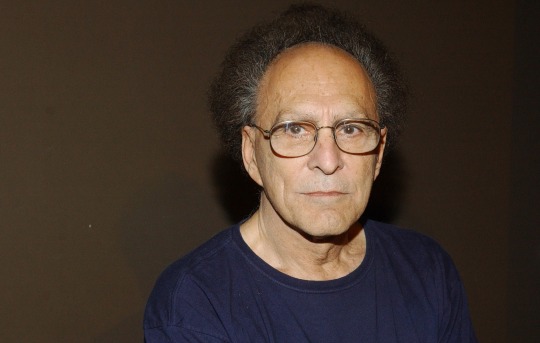
#monte hellman#cockfighter#the shooting#two lane blacktop#ride in the whirlwind#iguana#China 9 liberty 37#road to nowhere#the terror#the beast from the haunted cave#avalanche express#reservoir dogs#flight from fury#silent night deadly night 3#back door to hell#filmmaker#legend
1 note
·
View note
Photo

Clayton Shaw - Tehtävänä tappaa / China 9, Liberty 37 (1978) Europa Vision https://www.videospace.fi/release/clayton_shaw_tehtavana_tappaa_vhs_europa_vision_finland
#Videospace#VHS#Clayton Shaw - Tehtävänä tappaa#China 9#Liberty 37#Monte Hellman#Warren Oates#Fabio Testi#Jenny Agutter#VHS tapes#VHS art#VHS cover
0 notes
Text



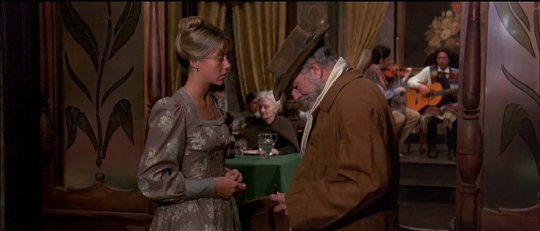


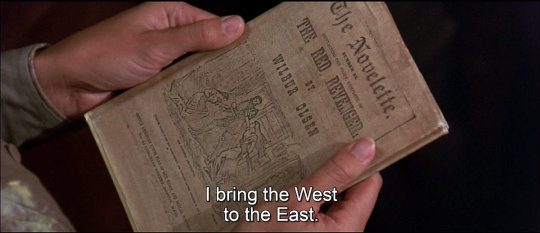





CHINA 9, LIBERTY 37 - AMORE PIOMBO E FURORE. Dir. Monte Hellman, 1978.
#jenny agutter#fabio testi#warren oates#sam peckinpah#monte hellman#tony brandt#movie#film#classic#western#westerns#cinema#1978#spaghetti western#movie screenshots
10 notes
·
View notes
Text
shortlist of stuff I wish had blu-rays
freaks (1932)
winchester ‘73 (1950)
the naked spur (1953)
vera cruz (1954)
peeping tom (1960)
targets (1968)
zabriskie point (1971)
the driver (1978)
dawn of the dead (1978)
china 9 liberty 37 (1978)
white dog (1982)
near dark (1987)
...and basically every shaw brothers production
3 notes
·
View notes
Photo
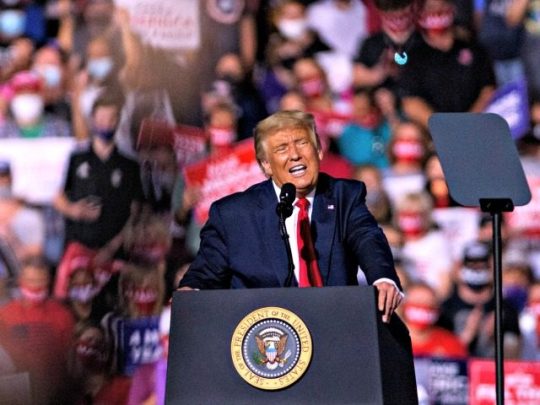
***Live Updates*** Trump Holds Georgia Rally for Sens. Loeffler, Perdu
President Donald Trump will hold a Saturday evening rally in Valdosta, Georgia, for GOP Senators Kelly Loeffler and David Perdue ahead of next month’s critical run-off elections that will determine control of the U.S. Senate.
Stay tuned to Breitbart News for live updates.
All times Eastern.
—
9:01 PM: Trump says our fight to drain the Washington Swamp and reclaim our destiny has just begun. “We will never, ever surrender,” Trump says.
8:58 PM: Trump says everything they have achieved is on the line on January 5th and talks about the right to bear arms and religious liberty.
8:55 PM: Trump says he has built the greatest political movement in history over the last four years and he doesn’t want others to “rip it apart” after talking about his ally Ronna McDaniel being back at the RNC. Trump now listing off all of his accomplishments like he did during his campaign rallies. No new material.
8:50 PM: Trump asks supporters to vote in the runoff to show the radical left that they don’t surrender. Trump talks about winning back the White House in 2024 and says hopefully he won’t have to be a candidate again.
Trump now praises Doug Collins and asks if he wants to run for governor of Georgia in two years.
8:48 PM: Trump says Democrats are trying to take away the country and says ���we’re going to be watching… every element of what they do” on January 5th and will watch the runoff election more closely than any election in history.
8:46 PM: Trump talking about glitches that went in favor of Biden. He says the left lies, cheats, and steals and are “ruthless” and “hellbent on getting power.” Trump says the left beats you down, shuts you up, and makes you retreat.
8:45 PM: Trump airing grievances about vote dumps in the middle of the night and wee hours in the morning in Midwestern states.
8:31 PM: Trump says Democrats can only win the Georgia runoff if they cheat. Trump says nobody cheats better than Democrats. Trump says “we have to hold the line” in Georgia and says Georgians need to register to vote before Monday.
He says Voter ID laws need to be passed after the runoff along with citizen confirmation.
8:30 PM: Trump asks Perder and Loeffler to come up and say a few words. Loeffler says Trump made America great again because he put America first. She says Trump created the strongest economy because he put the American worker first while standing up to cancel culture, Big Tech, China. Crowd chants “fight for Trump” as Perdue speaks.
Trump now talking about voter fraud in Georgia. He says he is deeply disturbed by the lying and cheating and he says Democrats will have dead people, illegal aliens, and people from out of state voting.
8:19 PM: Trump praises Loeffler for “standing up to the marxists” when law enforcement officials were attacked. He says she also introduced legislation to block gun-grabbing Democrats like Beto O’Rourke. Trump says Warnock has called police officers gangsters and wants to abolish cash bail.
“This is not for Georgia,” Trump says. He says Warnock should move to another state and try again. He hits Warnock for also being “anti-Israel.” Video plays of “dangerous” Warnock and his past statements, reminding voters he even defended Reverend “God Damn America” Wright.
8:15 PM: Trump says Ossoff is a “radical zealot” who supports “defunding the police” and the “Green New Deal” that Trump says will cost $100 trillion. He says Ossoff supports a government takeover of health care and nationwide lockdowns. He says Ossoff will be a “complete tool” of the radical left and their donors.
Trump then lets it slip that he raised $250 million dollars in the last couple of weeks.
8:07 PM: Trump talking up the brilliance of “America first” and he wonders how people can say they are opposed to “America first.” Trump now back to listing the accomplishments of Perdue and Loeffler.
8:06 PM: Trump says the happiest people right now are the Chinese and the Iranians because he lost.
8:03 PM: Trump says the “radical left” will win if Georgians don’t vote in protest.
“If you don’t vote, the socialists and the communists win,” Trump says.
8:02 PM: Trump now says he calls it “fake news” and “suppression news.” Trump says his attacks on Hunter Biden were hurting Joe Biden so Big Tech and the media decided, “under no circumstances will we ever talk about him again.”
He says it’s hard to have a scandal when nobody talks about it.
8:00 PM: Trump says Democrats want to take away borders and freedom and even Christmas as Melania looks on…. He says he has to be careful when he is “sarcastic.”
7:58 PM: Trump says the Georgia Senate seats are the “last line of defense” against all that his administration accomplished.
7:56 PM: Trump now talking about how experts said he was going to lose Texas and he won the state big. He says these are “suppression polls.”
7:53 PM: Trump talks up the Dow Jones and breaking “30,000, a number that was unthinkable.” Trump says states and cities should open up.
7:52 PM: Trump again warning Democrats will end the filibuster the first day they Chuck Schumer becomes majority leader. He now talks about the great justices he has appointed to the Supreme Court and the 300 judges he has appointed to the federal bench.
7:50 PM: Trump says the extreme left will pack the Supreme Court with “24 radical justices.” He says they want them to “revolve up and down the court system.” Trump says they want to “hurt the Supreme Court and they want to hurt it badly.”
7:45 PM: Trump says Democrats will open voters and give illegal immigrants free health care and welfare and allow them to vote so Republicans never win another election. He says they will also take down the wall, which Trump says he built despite…having Democrats oppose him. Trump says Democrats want sanctuary cities across the nation and release criminals and MS-13 gangsters. Trump says he has removed thousands out of the country.
Trump says Democrats will confiscate privately-owned firearms. He says they will also “cut up” the Second Amendment and will make D.C. a state. He says Democrats want six more senators and 40 House members from places you have never heard of. He says they will vote against Georgia and “cancel out your voice.”
7:42 PM: Trump rips “cryin’ Chuck Schumer” and says Democrats have been investigating him since he came down the escalator. Trump says if Democrats win Georgia, Democrats will take over farms and radical Democrats will abolish the Senate filibuster and ram through the most left-wing agenda while destroying our military through lack of funding. He says tell Senators to end Section 230. He says that’s the only thing Big Tech fears.
7:38 PM: Trump claims Georgia’s governor and secretary of state are afraid of Stacey Abrams. Trump now talking about getting to know a lot of legislators and having some in his “pocket” as he pulls out a list. Trump now asking for signature verification before name-checking more legislators.
7:37 PM: Trump says he won all over the place except in swing states. He claims the election was rigged and says we can’t let it happen to Loeffler, Perdue. Trump now claiming “hundreds of thousands” of illegal votes were cast and poll watchers were thrown out.
7:35 PM: Trump talks about receiving the highest percentage of non-white votes for a Republican since the 1960s. He talks about winning 18 of 19 bellwether counties. Trump wonders how Joe Biden got 80 million votes but only gets 1,000 people online to watch his Thanksgiving address.
7:31 PM: Trump says he got the most votes for a sitting U.S. president and insists he didn’t lose. He says they found a lot more ballots. Trump says he received most votes than any other incumbent in history and “we lost.”
7:27 PM: Trump says he is here to ensure that Loeffer, Perdue win the most important election runoff in American history.
Trump says you have to make sure Georgia’s governor “gets a lot tougher” and he says people have to make sure votes are counted and ballots aren’t thrown away.
He talks about the importance of Senate committees and Georgians will decide whether their children will grow up under socialism or freedom. He says Democrats want to go further than socialism and usher in a “communistic” type of system.
He says Jon Ossoff and Raphael Warnock are the two most radical candidates. Trump says they rigged the presidential election and insists he is still going to win it. He says they are going to try and rig the runoff.
“We continue to fight,” Trump says. “We’ve had some great moments.”
7:25 PM: Melania introduces Trump. Crowd chants “four more years.” Trump claims he won Georgia and “lots of other places.” Trump talks about being five down in Florida and winning by “a lot.” Trump says this has to be the first time someone lost the election after winning Florida and Ohio before saying he’s still fighting. He talks about numbers coming out of “ceilings and leather bags” that makes you wonder what’s going on. He says he’s thrilled to be back in Georgia and wishes everyone “Merry Christmas.”
Trump sends along prayers to Loeffler’s staffer who passed away in a car accident yesterday.
He also expresses warmest wishes to people suffering from COVID before talking about the vaccine. He says even some of his “enemies” are calling it a “medical miracle.” He says his administration should “always get credit” for the vaccine.
7:20 PM: Melania Trump thanks the crowd for coming out to support Trump, and she says “we must keep our seats in the Senate.” She says it is more important than ever for Georgians to exercise their right to vote in the runoff.
7:15 PM: President Donald Trump and First Lady Melania Trump get off Air Force One. Rally about to get started. “Defund Democracy” signs in the crowd.
7:05 PM: Loud cheers for Air Force One. Rally should be starting shortly.
____________________________________________________
OPINION: “He says Voter ID laws need to be passed after the runoff along with citizen confirmation.
Yes, Americans agree with that statement from President Trump 1000%.
The President is teaching our Country to be proud and never allow anyone from the ‘inside’ or ‘outside’ of our country to destroy our great country for the sake of power over American freedom of democracy and speech.
1 note
·
View note
Text
How the world views the U.S. and its president in 9 charts
America’s global image today is complicated. On balance, people around the world continue to give the United States favorable ratings and say it respects the individual liberties of its people. More countries also prefer the U.S. as the world’s leading power over China. At the same time, many express frustration about America’s role in the world and say they have little confidence in President Donald Trump to do the right thing in world affairs, according to a new Pew Research Center survey of 25 nations.
Here are nine charts that show how people in these countries see the U.S. and its president:

Western Europeans have strikingly negative views of Trump. In the United Kingdom, Germany, France and Spain – four nations the Center has consistently surveyed over the past 15 years – there is a clear pattern in public perceptions of U.S. presidents. People in these countries generally had little confidence in President George W. Bush to do the right thing regarding world affairs. Their confidence was much higher in Bush’s successor, President Barack Obama, but it plunged following Trump’s election in 2016. This year, confidence in Trump remains low in Germany, France and Spain – but it is up slightly in the UK. Of the 25 countries surveyed, a median of 70% lack confidence in Trump to do the right thing regarding world affairs.

Views of the U.S. are favorable on balance, but concerns are evident. Across the 25 countries surveyed, a median of 50% have a favorable opinion of the U.S., while 43% have an unfavorable view. Likewise, a median of 51% say the U.S. respects the personal freedoms of its people, compared with 37% who say it does not. However, there is international concern about America’s role in world affairs. Large majorities say the U.S. doesn’t take the interests of other countries into account when making foreign policy decisions. Also, a global median of 37% believe the U.S. is doing less to help address major global problems than it used to.
Keep reading
72 notes
·
View notes
Photo










China 9, Liberty 37 (1978)
#china 9 liberty 37#warren oates#fabio testi#sam peckinpah#spaghetti western#jenny agutter#franco interienghi#monte hellman#tony brandt
3 notes
·
View notes
Text
There is no filling in your own answers. All you have to do it copy this into a new email. Make all of the text black again to start. Change the text to red on all of the things you have done, leaving the ones you haven't black. By doing this, I realized that I have a lot more fun things to do and see.
1. Started your own blog
2. Slept under the stars
3. Played in a band
4. Visited Hawaii
5. Watched a meteor shower
6. Given more than you can afford to charity
7. Been to Disneyland (Disneyworld)
8. Climbed a mountain
9. Held a praying mantis
10. Sang a solo
11. Bungee jumped
12. Visited Paris
13. Watched a lightning storm at sea
14. Taught yourself an art from scratch
15. Adopted a child
16. Had food poisoning
17. Walked to the top of the Statue of Liberty
18. Grown your own vegetables
19. Seen the Mona Lisa in France
20. Slept on an overnight train
21. Had a pillow fight
22. Hitch hiked
23. Taken a sick day when youʼre not ill
24. Built a snow fort
25. Held a lamb
26. Gone skinny dipping
27. Run a Marathon
28. Ridden in a gondola
29. Seen a total eclipse
30. Watched a sunrise or sunset
31. Hit a home run
32. Been on a cruise
33. Seen Niagara Falls in person
34. Visited the birthplace of your ancestors
35. Seen an Amish community
36. Taught yourself a new language
37. Had enough money to be truly satisfied
38. Seen the Leaning Tower of Pisa in person
39. Gone rock climbing
40. Seen Michelangeloʼs David
41. Sung karaoke
42. Seen Old Faithful geyser erupt
43. Bought a stranger a meal at a restaurant
44. Visited Africa
45. Walked on a beach by moonlight
46. Been transported in an ambulance
47. Had your portrait painted
48. Gone deep sea fishing
49. Seen the Sistine Chapel in person
50. Been to the top of the Eiffel Tower in Paris
51. Gone scuba diving or snorkeling
52. Kissed in the rain
53. Played in the mud
54. Gone to a drive-in theater
55. Been in a movie
56. Visited the Great Wall of China
57. Started a business
58. Taken a martial arts class
59. Visited Russia
60. Served at a soup kitchen
61. Sold Girl Scout Cookies
62. Gone whale watching
63. Got flowers for no reason
64. Donated blood, platelets or plasma
65. Gone sky diving
66. Visited a Nazi Concentration Camp
67. Bounced a check
68. Flown in a helicopter
69. Saved a favorite childhood toy
70. Visited the Lincoln Memorial
71. Eaten Caviar
72. Pieced a quilt
73. Stood in Times Square
74. Toured the Everglades
75. Been fired from a job
76. Seen the Changing of the Guards in London
77. Broken a bone
78. Been on a speeding motorcycle
79. Seen the Grand Canyon in person
80. Published a book
81. Visited the Vatican
82. Bought a brand new car
83. Walked in Jerusalem
84. Had your picture in the newspaper
85. Read the entire Book of Mormon or Bible
86. Visited the White House
87. Killed and prepared an animal for eating
88. Had chickenpox
89. Saved someoneʼs life
90. Sat on a jury
91. Met someone famous
92. Joined a book club
93. Lost a loved one
94. Had a baby
95. Seen the Alamo in person
96. Swam in the Dead Sea
97. Been involved in a law suit
98. Owned a cell phone
99. Been stung by a bee
100. Read an entire book in one day
0 notes
